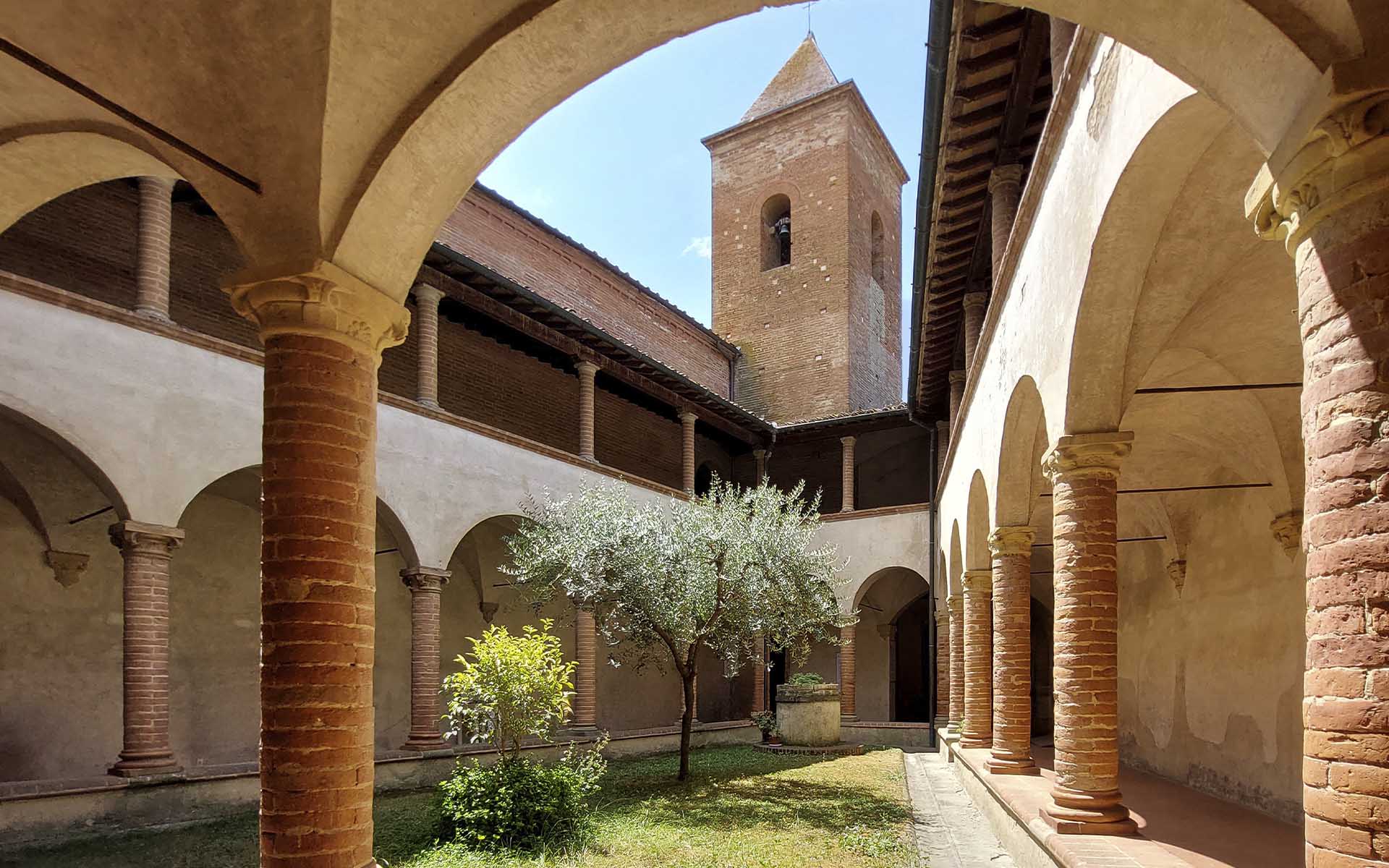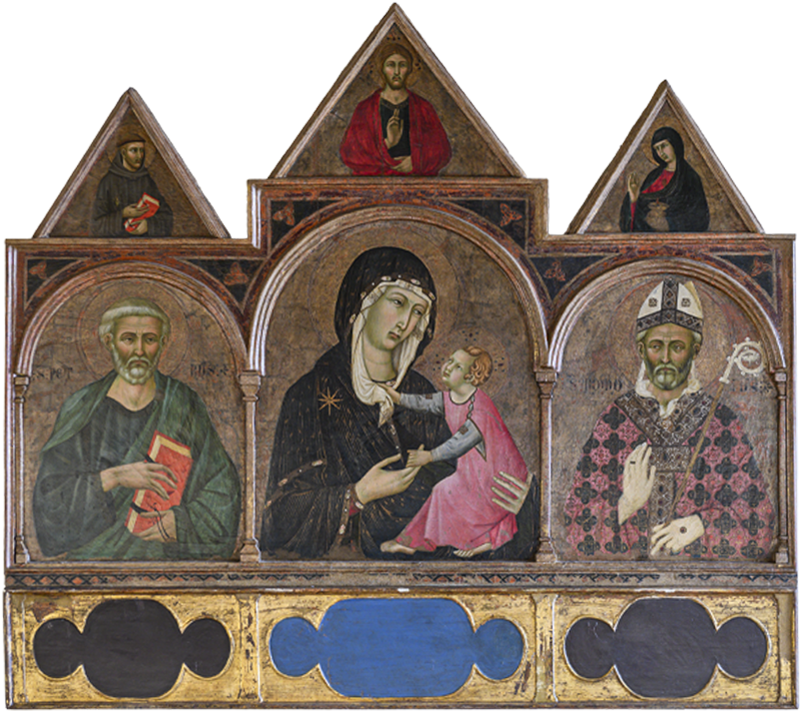The triptych depicts in the central compartment the Madonna in the act of turning her gaze toward the Child who, in turn, sanctions the indissoluble bond to his mother by clinging to her hand and the hem of her robe. In the side compartments are saint Peter on the left and saint Romulus on the right, while in the cusps are depicted Christ blessing in the center, saint Francis on the left and saint Lucia.
Accompanying the polyptych there is a predella, presumably made in later years, which is very lacunose and lacks depictions, as confirmed by the restoration carried out in 1995, during which the repainting added at the end of the 18th century was removed. The woodwork is original, still intact and with its excellent freehand graffiti decoration.
The work comes from the church of Santa Maria a Bagnano, where it had been placed on the high altar since 1655, but the depiction of Saint Romulus (bishop of Fiesole) leaves open the hypothesis that it came from a church in the diocese of Fiesole, bordering Valdelsa.
Ever since the 1933 Florence Treasure Exhibition, where it was first made known, the triptych has been associated to Ugolino di Nerio, a Sienese painter who was a pupil of Duccio di Buoninsegna and intimately influenced by the spirituality and the elegance of Simone Martini, as well as the main spreader of Sienese figurative culture in Florence through prestigious commissions, and his panels were found in the territory bordering Certaldo, including Santa Verdiana in the Museum of Santa Verdiana in Castelfiorentino.
Over time, reasonable doubts have been raised about the autography of this panel because of the executive weakness of some details, the almost total absence of punching on the nimbuses, and the unknown painter’s unfamiliarity with the anatomy of the hands, all elements which were taken into consideration by Federico Zeri (1963), who related the work to the Master of Monteoliveto, the author of a small panel preserved in the monastery of Monte Oliveto Maggiore in Val d’Orcia.
Of a different opinion are many other intellectuals (C. Volpe, 1963), more likely to think that this is a later work of Ugolino, dated 1315-1320, because of its new idea of space a for its volume of the figures, in particular the group of the Madonna with Child, a literal transcription of the polyptych of Badia by Giotto.




